Hidden Europe: 25 experiences that go beyond the tourist trail
You know its world-famous wine regions and iconic cities. Now get to know a different side of the Continent, one of hidden archipelagos and uncrowded marvels.
THE DETAILS: EUROPE
- Total land mass 10.5 million square kilometres
- Number of countries 50
- Total population 742 million
- Main religions six
- Major cities Moscow, Paris, London and Madrid
- Did you know? Europe’s smallest country is Vatican City, totalling about 0.44 square kilometres
Go wine tasting in Georgia
France is world-famous for its wineries, and well worth a visit to sample a few drops; Italy and Spain are just as well known. But those countries have only been making wine for 2500 years or so. In Georgia, they’ve been growing grapes and fermented the juices for more than 8000 years, and you can very easily tap into that knowledge and history in the region of Kakheti. Here the wine is very good, not to mention modestly priced, and often served at local wineries alongside whopping spreads of excellent local food. A must for any wine fan. See georgia.travel
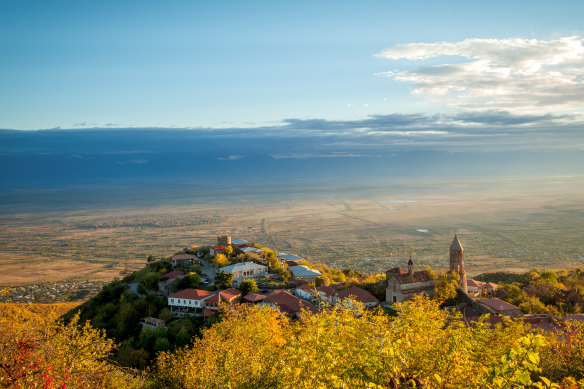
Georgia’s Alazan Valley.Credit: iStock
Spend a night (or more) in the stunning Stockholm archipelago, Sweden
You know about Stockholm the city, but how about Stockholm the archipelago? There are more than 30000 islands surrounding the Swedish capital, many home to tiny communities and unique accommodation options. These are tranquil, beautiful outcrops, with idyllic bays and sandy beaches, forested hills and rocky shorelines. To stay in a traditional cottage here, to spend the day exploring on foot, or puttering around in a boat, swimming in a secluded bay or relaxing and taking in the views, there are few things better. See visitsweden.com
Marvel at the leaning tower of Bologna, Italy
Here’s something you may not know: the Leaning Tower of Pisa is not Italy’s only tilting tower. Over in Bologna, in the delicious region of Emilia-Romagna, there were once an estimated 100 sky-scraping edifices. These days only 20 remain, though they’re still impressive, particularly the highest and most famous pair: the 97 metres Asinelli Tower, and the 48 metres Garisenda Tower. The latter has such a distinctive lean that it’s had to be closed to the public while local authorities spend 10 years and €20 million ($33 million) shoring it up. Still, it’s quite the wonky sight. See bolognawelcome.com
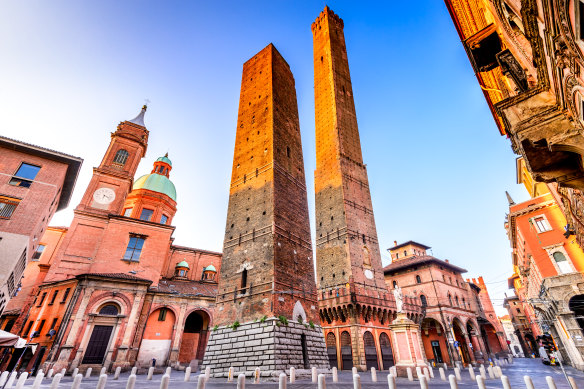
Bologna, and its two towers – Asinelli and Garisenda.Credit: iStock
Explore the spectacular Picos de Europa, Spain
Name Europe’s iconic mountain ranges and you inevitably come up with the Swiss Alps, the Pyrenees, perhaps the Dolomites. Those are all incredible places, but of course this continent has more to offer, and perhaps the most gorgeous of the alternatives is Spain’s Picos de Europa. This is an inhabited nature reserve, taking in 11 villages across the regions of Asturias, Cantabria and Leon, meaning there’s both natural beauty and cultural fascination here. Visitors can experience everything from sightings of wolves and bears among the rugged peaks, to visiting cheesemakers ageing blue Cabrales cheese in caves, to staying in local B&Bs in historic towns such as Potes. See spain.info
Pedal the EuroVelo network, Europe-wide
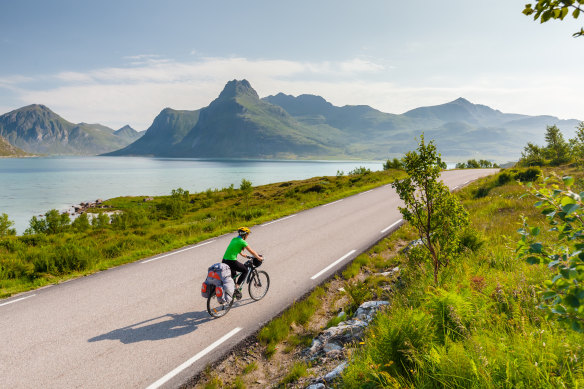
A two-wheeled excursion in Norway.Credit: iStock
Cyclists, read this, then grab your lycras and start training, because you are going to be booking a trip to Europe as soon as possible. EuroVelo is a network of long-distance cycling routes that are being developed across the continent, and when finished will represent more than 90,000 kilometres of glorious pedalling. Many routes are already finished, including the 10,000 kilometres Atlantic Coast Route from Norway to Portugal, and the shorter likes of the Rhine Cycle Route, at 1500 kilometres through four countries, and the 1125 kilometres Waters of Central Europe trail through Austria and Hungary. See eurovelo.com
Walk the Via Podiensis in France
By now, you may have already walked part of or all of the Camino de Santiago, the increasingly popular pilgrims’ trail through Spain. It’s a moving experience, both physical and spiritual, and highly recommended. If you’re searching for a new challenge, or just want to steer clear of the bulk of the crowds, we would suggest the Via Podiensis, one of several pilgrims’ trails in France that link up to the Spanish Camino. Beginning in Le Puy in the Haute Loire, this 736 kilometre route also passes through Lozere, Aveyron, Gers, Landes and more, finishing Basque Saint-Jean-Pied-de-Port. The scenery is gorgeous, the accommodation charming, the local culture intoxicating. See france.fr
Swim in the crystalline waters of Lake Bled, Slovenia
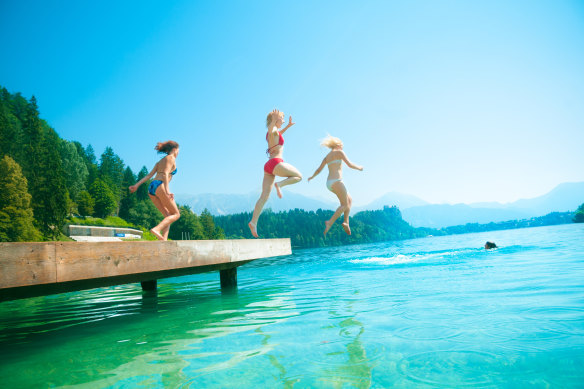
Take a dip in the cool blue of Lake Bled.Credit: iStock
The word “fairytale” gets thrown around pretty loosely when it comes to Europe, with all of its turreted castles and medieval cities. However, the term will still inevitably pop to mind when you discover Lake Bled, the pristine expanse of water that nestles amid meadows and forests in the north-west of Slovenia, in the shadow of the Julian Alps, helped of course by a medieval castle atop a tiny island in the middle. You will feel a strong urge to swim in these crystal-clear waters, and you absolutely should indulge it. There are few better places to take a dip. See slovenia.info
Cruise the delights of the Douro River, Portugal
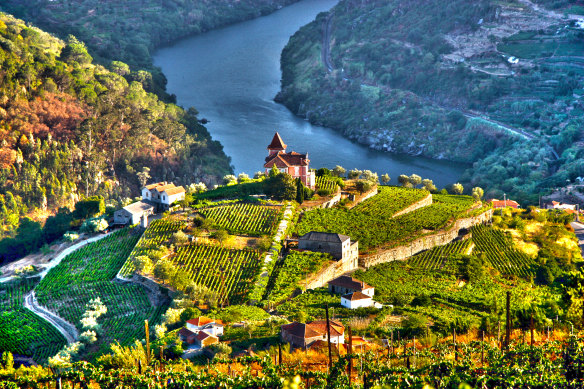
Portugal’s Douro Valley.Credit: iStock
River cruising in Europe has long been a bucket-list item, particularly iconic journeys on the Rhine, the Main and the Danube rivers. So, where to next? We would suggest Portugal, and in particular the Douro River. To begin with, you have a natural spectacle, a gorgeous river that winds its way through the rolling hills and ancient towns of lush northern Portugal. But then you have the culture, the historic buildings, the local wine, the gastronomy, and the joy of some of the friendliest people on the planet. APT also has its new ship, the MS Estrela, cruising the Douro, so you can’t lose. See aptouring.com.au
Savour Scandinavia’s fabulous food halls
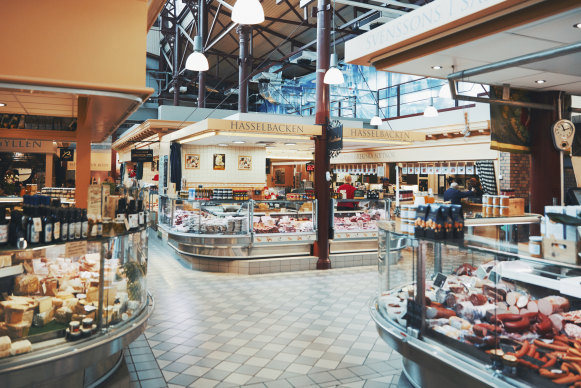
Stora Saluhallen in Gothenburg, open since 1888.Credit: Visit Sweden
For a time there, the cuisines of Sweden, Norway and Denmark were not given their due. Few people travelled to Europe to eat in Scandinavia. Fortunately that is now changing, and once you’ve done the Michelin stars of southern Europe it’s time to head north to investigate a burgeoning food scene that often has its centre around the humble market. At the likes of Mathallen in Oslo, Feskekorka in Gothenburg, Torvehallerne in Copenhagen and Ostermalm in Stockholm, visitors can pick through the finest fresh produce, and then visit one of the myriad on-site restaurants to see how the experts utilise it. See visitsweden.com, visitnorway.com, and visitdenmark.com
Cruise the wild and rugged Scottish coastline
Just hear the names to imagine this experience: Troon, Skye, Iona, Scapa Flow, Stromness, the Shetlands. Scotland’s coastline, taking in the Inner and Outer Hebrides, Orkney and the Shetland Islands, is wild and ruggedly handsome. It’s also filled with archaeological sites that tell of Vikings and Druids and Norsemen, as well as vast seabird colonies, rare wildflowers, and tiny communities of locals who still practise traditions such as the production of high-quality knitwear. This experience of the world’s far north is the obvious follow-up to the likes of the Norwegian fjords. See auroraexpeditions.com.au
Wander the Old Town in Tallinn, Estonia
Europe is blessed with many a charming Old Town, though they also tend to be filled with tourists. In the likes of Krakow, Bruges, Prague and Vienna you will find large crowds bustling their way through narrow streets and quaint squares. And then, there’s Tallinn. The Estonian capital’s walled Old Town is UNESCO heritage-listed, filled with Gothic architecture lining cobbled alleys, with plenty of cafes and restaurants and other amenities to keep you happily exploring for days. It’s also off the mainstream tourist track, which helps to keep crowds manageable. See visitestonia.com
Test your culinary boundaries at Alchemist in Copenhagen, Denmark
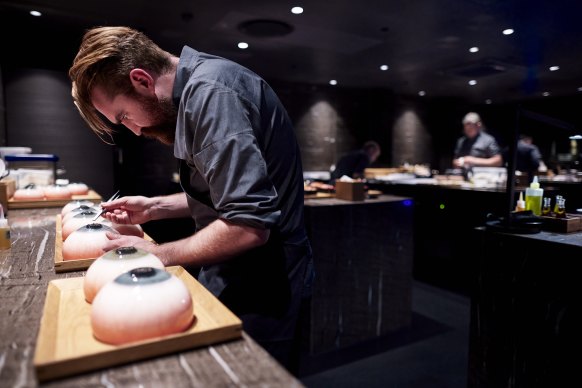
Chef Gregor Power at work at Alchemist.
The great avant garde restaurants of Europe are beginning to disappear. First there was Spain’s el Bulli, which revolutionised fine-dining with its blend of art and science. Then came Denmark’s Noma, another pioneer at the forefront of culinary evolution, which will close its doors at the end of this year. Those restaurants’ mantle appears to have been taken up, however, by chef Rasmus Monk and his Copenhagen fine-diner Alchemist. This won’t be everyone’s idea of a good time; however, if you want to see the boundaries of the dining experience forever altered, in much the same way as el Bulli and Noma did, this is the place to secure a booking. See alchemist.dk
Take a self-drive cruise on the Canal du Midi, France
It’s not just that you’re in charge of your own little boat puttering through the French countryside, taking in the sights and sounds and scents at little more than walking pace. Although, that is a huge attraction. However, when you hire a boat and cruise the Canal du Midi in southern France, you also have ample opportunity to tie up and explore in the likes of Toulouse, Carcassonne, Beziers, Sete, and all points in between. That’s a lot of history, a lot of culture, a lot of food and wine – all at your leisure. See leboat.com.au
Marvel at the Mosque-Cathedral of Cordoba, Spain
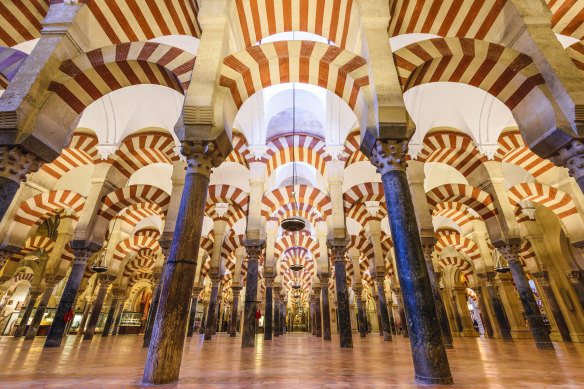
The cinematic Hypostyle Hall of the Mosque-Cathedral in Cordoba.Credit: iStock
Europe has no shortage of impressive cathedrals, as any first-time visitor could attest: Notre Dame, the Sagrada Familia, Westminster Abbey, the Duomo of Florence… we could go on. Still, after you have visited those icons, clear space on the bucket list for the Mosque-Cathedral of Cordoba, in southern Spain. As the name suggests, this sprawling edifice was first built as a mosque, in the year 785, was converted to a cathedral in 1236, and today features a rich mix of architectural styles spanning two religions and more than 1000 years of construction. See spain.info
Float on the Aare river in Bern, Switzerland
Bern may lack the big-ticket reputation of Zurich, the charm of Lucerne, and the beauty of Lauterbrunnen. But what it does offer is perhaps Switzerland’s low-key highlight: the chance to simply float through town on the Aare River, with nothing but a lilo and a smile. This has become a very popular summer tradition among Bern locals, who take to the water in all manner of inflatable river craft, some beginning miles upstream to float down into the city, where they paddle to the banks for barbecues and beers. See myswitzerland.com
Explore Malta, the microcosm of the Med
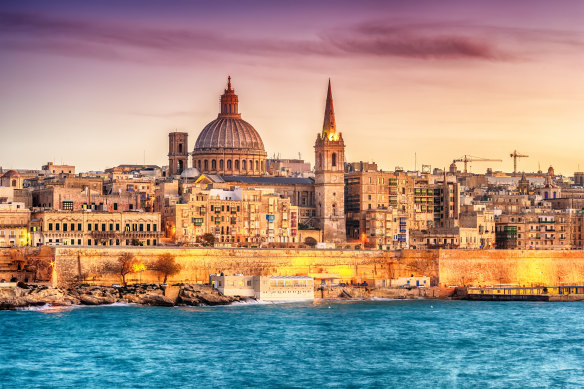
A jewel of the Med… Valletta, MaltaCredit: iStock
So you want classic Mediterranean cities, all narrow alleys lined with tiny bars and restaurants? You want excellent food with a mix of cultural influences utilising high-quality local produce? How about clear, warm water to swim in? Perhaps a few charming port towns to explore? And would it help to have historic monuments, churches, cathedrals? Then we have just the place for you, and it’s not as packed as Italy, not as expensive as France. It’s Malta, which has all these classically Mediterranean attractions and more. See visitmalta.com
Dine at Lyonnais bouchons, France
A bouchon in French can be a wine cork, a traffic jam, or best of all, a style of no-frills local restaurant you will most commonly find in Lyon. The food at these classic bistros is hearty and unpretentious, the likes of coq au vin, andouillette sausages, quenelles (a type of dumpling), breaded tripe, and apple tart. The atmosphere is friendly, relaxed and occasionally raucous. The price tag is relatively low. In a country where there’s something of an expectation that the best food will be served in a way that’s stuffy and overly formal, the Lyonnais bouchons are a glorious counterpoint. See france.fr
Tackle the Continent by campervan
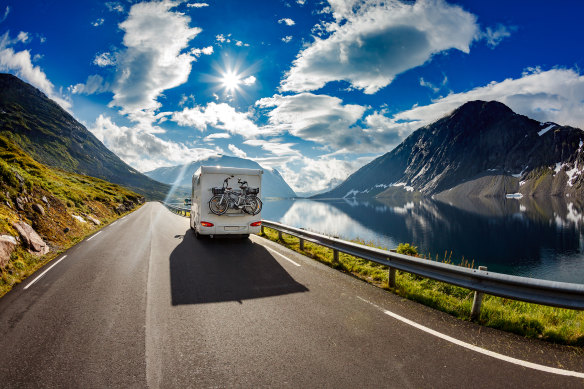
Europe by campervan.Credit: iStock
You know the saying: everything old is new again. Forty or 50 years ago, every traveller dreamed of one day buying or renting a campervan and driving around Europe, hopping from campsite to campsite, taking in the continent on a budget. And now, here we are with #vanlife, a movement among travellers to get back to that old style of movement, and see the world in a campervan. This is one of those fads that should never have gone away, given the freedom and the relative lack of expense (once you’ve procured your vehicle) for those travellers happy to see Europe in the slow lane. See anywherecampers.com
Be awe-struck by Roman mosaics in Gaziantep, Turkey
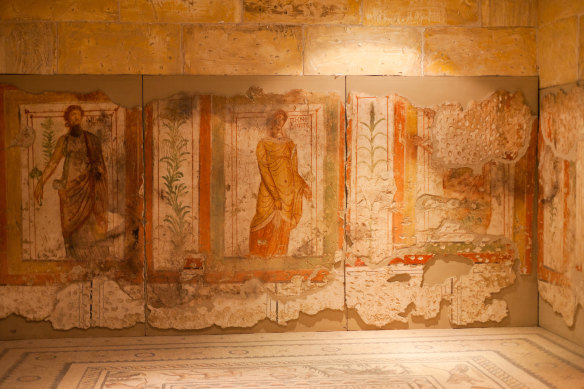
Gaziantep Museum displays the world’s most impressive mosaic collection from ancient city of Zeugma.Credit: iStock
So you’ve been wowed by the Colosseum, by the Pantheon, by Pompeii and Ephesus? Then it’s time to indulge your interest in Roman history a little further by visiting the Zeugma Mosaic Museum in Gaziantep, Turkey. This is the largest mosaic museum in the world, and it features more than 3000 square metres of incredibly well-preserved Greek and Roman mosaics found in the ruins of villas at the Zeugma archaeological site, which is now underwater after the building of a dam. The breadth and beauty of this collection is hard to overstate. See muze.gov.tr
Behold the bridge-jumping in Mostar, Bosnia and Herzegovina
There’s much to see in Mostar, a city that has been carefully rebuilt after its war-torn recent past, and which features historic attractions such as the 18th-century Muslibegovic House, the 400-year-old Koski Mehmed Pasha mosque, and the Old Bridge, built in 1556, rebuilt in 2004. Though the bridge is a lovely sight of its own accord, many visitors come to Mostar to see locals diving from it, plunging 21 metres into the cold waters of the Neretva River below. See tourismbih.com
Ski with the celebs in Lech-Zuers, Austria
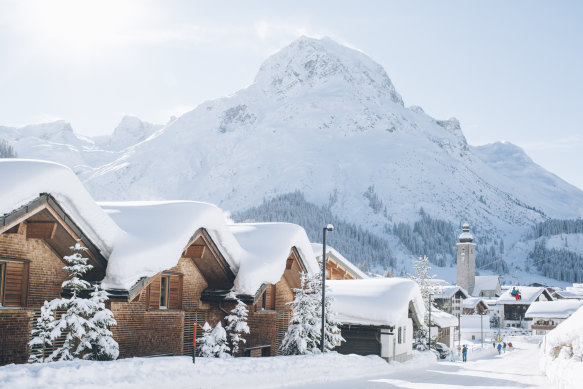
Fresh powder at Lech-Zuers.Credit: Lech Zurs Tourism
This isn’t the cheapest place to ski. In fact, it’s probably one of the most expensive, which is part of the reason Princess Diana liked to ski in Lech-Zuers, as does Formula One star Sebastian Vettel, and it’s a regular haunt of the Dutch royal family. Lech-Zuers isn’t all glitz and glam though – it’s a surprisingly low-key village in the region of Arlberg, though it does feature some truly beautiful, high-end accommodation, and all the ski terrain you could hope for. Trust us, spend a few nights at the Gasthof Post hotel, schussing down the slopes and drinking spritzes on the terrace, and you will feel like royalty. See lechzuers.com
Explore the Louvre’s oft-overlooked counterpart
The obvious bucket-list art gallery has to be the Louvre, home to the most famous smile in history, not to mention some 38,000 extra pieces of art displayed across 60,000 square metres of museum. And yet just a 15-minute walk from the Louvre you have the ultimate entry for your new bucket list: the Musee d’Orsay. This amazing and perennially overshadowed gallery is dedicated to the works of the Impressionists, with masterpieces by Monet, Degas, Renoir, Cezanne, van Gogh and more. Even its setting is gorgeous, in an old railway station. See musee-orsay.fr
View the monster waves at Nazare, Portugal
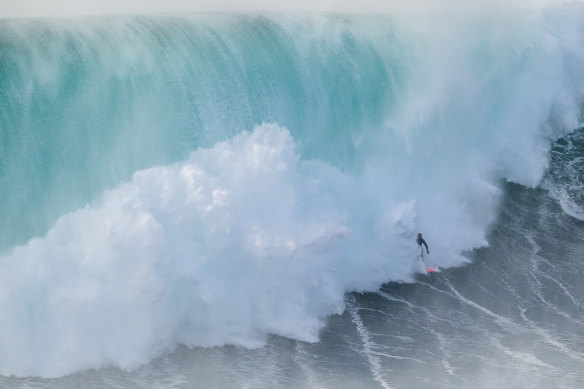
Will Santana of Brazil rides one of Nazare’s famouse big waves.Credit: Getty
Picture a five-storey building; a large block of flats. And now picture that block of flats moving towards you, rolling, frothing, cresting and falling on top of you. That’s what the waves are like in Nazare, the world’s premier big-wave surfing location. In winter, this spot midway up the Portugal coast is regularly treated to swells up to 25 metres high, colossal waves that break close enough to shore for spectators to watch the brave men and women who strap on surfboards and ride them. For those interested in surfing, or just the sight of the most enormous waves you could imagine, Nazare is the place. See visitportugal.com
Walk the Lycian Way in Turkey
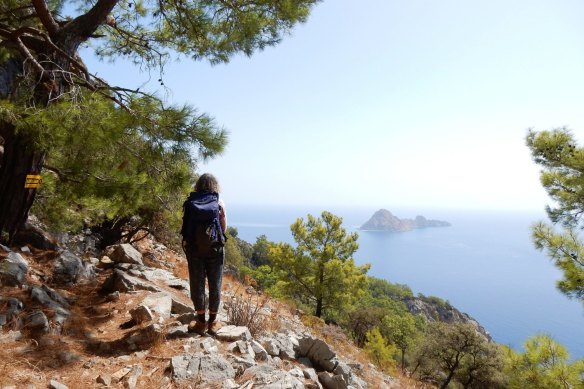
Many of the trails along the Lycian Way have been in use since ancient times.
If you hunger for a challenge, or like the idea of travel so slow it’s at walking pace, this could be your next bucket-list adventure: Turkey’s Lycian Way, a 520 kilometre pathway along the south-west coast. Many of these trails were used by the ancient Lycian civilisation, as well as Persians, Greeks, Romans and Ottomans, and this linked pathway takes in much of their history, as well as spectacular coastal vistas. It’s best to bite off small chunks of this trail, perhaps on a tour with Intrepid Travel, who offer eight-day itineraries walking from Fethiye to Antalya. See intrepidtravel.com
Cruise into Kotor, Montenegro
There is perhaps no more spectacular arrival at any port in the world than Kotor. Cruise vessels begin by entering the Bay of Kotor through a narrow gap between two headlands on the Adriatic Sea, before passing through yet another narrow opening into another part of the bay, and finally rounding a corner to see the Old Town of Kotor and its surrounding mountain ranges laid out in its full glory. The city itself is lovely, but the approach is more than worthy of its own entry on your to-do list. See emeraldcruises.com.au
Q+A
Michelle Black, Viking Cruises
I love Europe because … of the history, culture and food. Standing on centuries-old cobblestones and wondering about the stories of the past. And the people-watching, I could waste countless hours sitting in a sidewalk cafe watching the world go by.
For me, the hottest new bucket list destination/experience in Europe is … the Douro river in Portugal. I am heading there in early July, and I can’t wait – it’s been on my list for several years now. I plan to overdose on Portuguese tarts and sardines, although I’ll take it a little easy on the port wine.
The one classic bucket list destination for Europe is … it would have to be Paris. I’ve been fortunate to visit a number of times, and I fall back in love with the city every time. Truly a place for walking and exploring, it never disappoints and there are always new hidden places you’ve never discovered before.
The one big issue for travellers when visiting Europe is … everything from airfares to hotels and eating out can be very expensive which can be a barrier to exploring Europe for Australian travellers.
You can deal with that by ... journeying through Europe from its majestic waterways. In land-based travel, all those taxis, trams, restaurants, accommodation, entertainment and attraction costs really add up.
You can be a better traveller to Europe by making sure that you … avoid travelling in the peak season and benefit from fewer crowds, shorter queues and cooler weather.
My one big travel tip for Europe is … cruising is a great way to travel easily and extensively throughout Europe without the packing, unpacking, transfers, flights, trains, etc. The ship will get you to your destination overnight, without you having to do a thing.
Sign up for the Traveller Deals newsletter
Get exclusive travel deals delivered straight to your inbox. Sign up now.